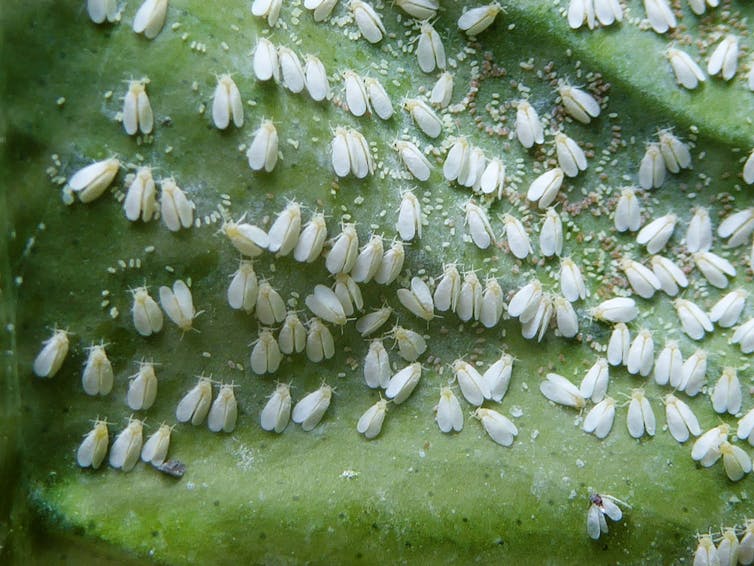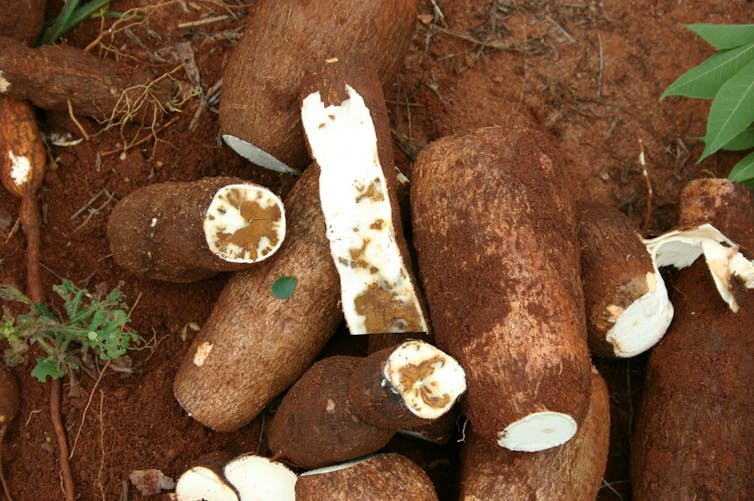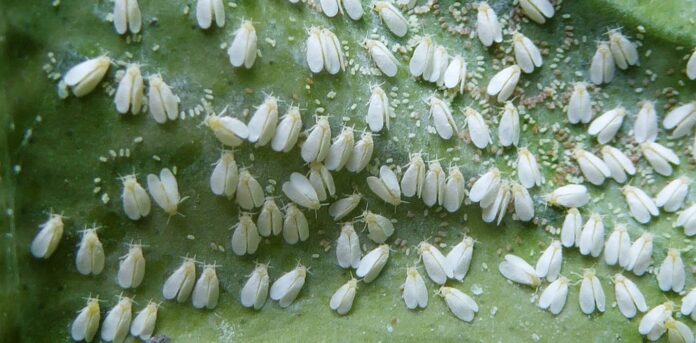Africa’s most notorious insects – the bugs that hit agriculture the hardest
By Esther Ndumi Ngumbi, Auburn University
The dreaded crop-eating fall armyworm continues to spread across Africa like wildfire. This invasive insect pest, first reported in Africa in early 2016, is in more than 20 African countries including South Sudan and South Africa. It has destroyed many staple crops like maize. Damage to maize alone by this pest could total USD$3 billion in the next 12 months.
Crop losses in African countries due to insect pests are estimated at 49% of the expected total crop yield each year, according to the Centre for Agriculture and Biosciences International. But some crop losses can be even worse, and the effects of the changing climate are expected to increase the damage done by insects.
Which are Africa’s top insect pests? The ones named here are just a few of the wide range of insect pests that affect crop production in Africa. But describing the top ones – and the crops they attack – can help focus the minds of researchers, governments and development agencies.
Insects that damage cereal crops
Cereals like maize, rice, wheat and sorghum are Africa’s most important food crops. Maize is by far the most widely grown cereal crop – more than 300 million people out of approximately 1 billion people in sub-Saharan Africa depend on it as their main food source. Maize is severely affected by pests. The most significant yield losses are caused by lepidopteran stem borers, Busseola fusca (Fuller) and Chilo partellus Swinhoe (Crambidae).
Depending on the country, season, region and maize variety, Chilo partellus can cause (annual) yield losses ranging from 15% to 100%. Production losses of up to USD$450 million to farmers in eastern Africa by Chilo partellus have been reported.

Root and tuber crops
More than 240 million tons of root and tuber crops, including cassava, sweet potato, potato and yam, are annually produced on 23 million hectares of land in Africa. As many as 500 million to 1 billion Africans consume cassava. While the crop is tolerant of heat and other extremes, it’s vulnerable to insect pests.
Bemisia tabaci (Gennadius) is Africa’s main cassava insect pest. Unlike the stem borers, which chew and bore through stems and new maize cobs, these whiteflies feed directly on plants’ sap. They also carry cassava plant diseases.

The most important disease they transmit are the Cassava Mosaic virus and Cassava Brown Streak disease. Entire yield losses have been reported and annual economic losses in East and Central Africa have been estimated at US$ 1.9-2.7 billion dollars.
Legume crops
Legume crops, including cow peas and beans, are an important part of African diets. They provide protein, vitamins and minerals such as calcium and antioxidants. But the production of most legume crops is threatened by several insect pests including bean flies, aphids, thrips, leafhoppers, whitefly and leaf beetles.
The legume pod borer is a serious pest for cowpeas, a crop that is consumed by over 200 million Africans. Yield losses of up to 80% have been reported in Nigeria, Niger and Burkina Faso —- the three major cowpea producing countries.
Efforts at control
Because of insects’ impact on food security, billions of dollars have gone into research aimed at finding effective control measures. The International Center of Insect Physiology, for example, dedicated over a decade of research in an effort to find ecologically sustainable controls for lepidopteran stem borers. The International Institute of Tropical Agriculture is developing crop varieties that are resistant to insect pests and the plant diseases they spread.
There are many more insects that affect African crop production. And minor pests can become a greater threat when weather conditions change or when they develop resistance to chemical pesticides used to control them.
Insects can spread into new areas because of trade and climate change. The resulting outbreaks can destabilise food security and the gains made in crop productivity. The emergence of the fall armyworm in Africa is an example of this.
Many invasive insect species can be controlled at early stages before they disperse to new environments. It requires better surveillance and monitoring by African countries.
This should include predictive modelling – a process that uses data mining and probability to forecast future outcomes. The process could help determine when the next insect invasions are likely to occur or predict the impact of a changing climate on the distribution of insect pests. It has already been used to help predict the impact of temperature changes on the future distributions of lepidopteran maize stem borers and their natural enemies.
Countries could then prepare to reduce the impact of insect invasions. Because insects know no borders, it is important for African countries to work together on combating pests.![]()
Esther Ndumi Ngumbi, Research Fellow, Department of Entomology and Plant Pathology, Auburn University
This article is republished from The Conversation under a Creative Commons license. Read the original article.



